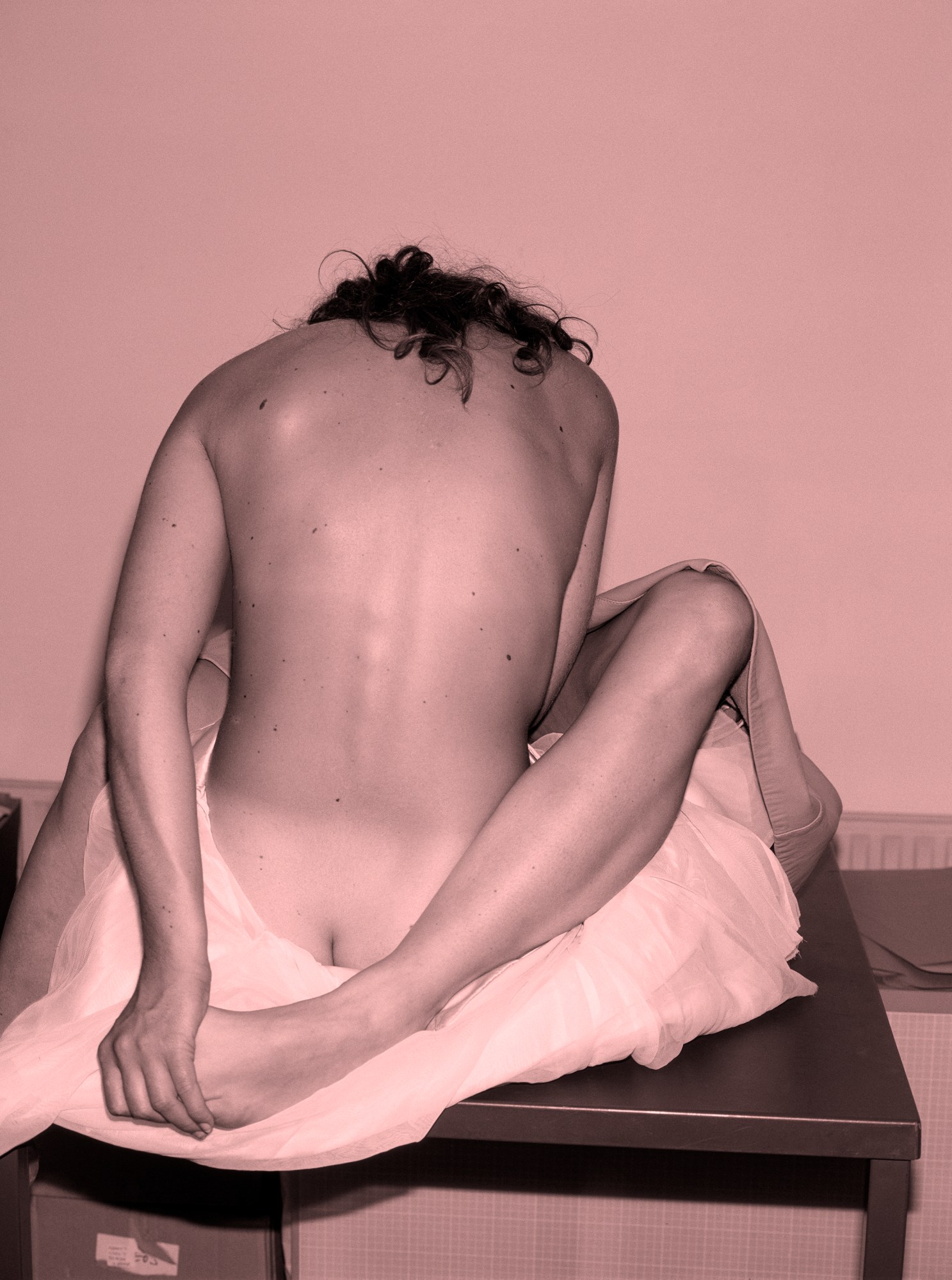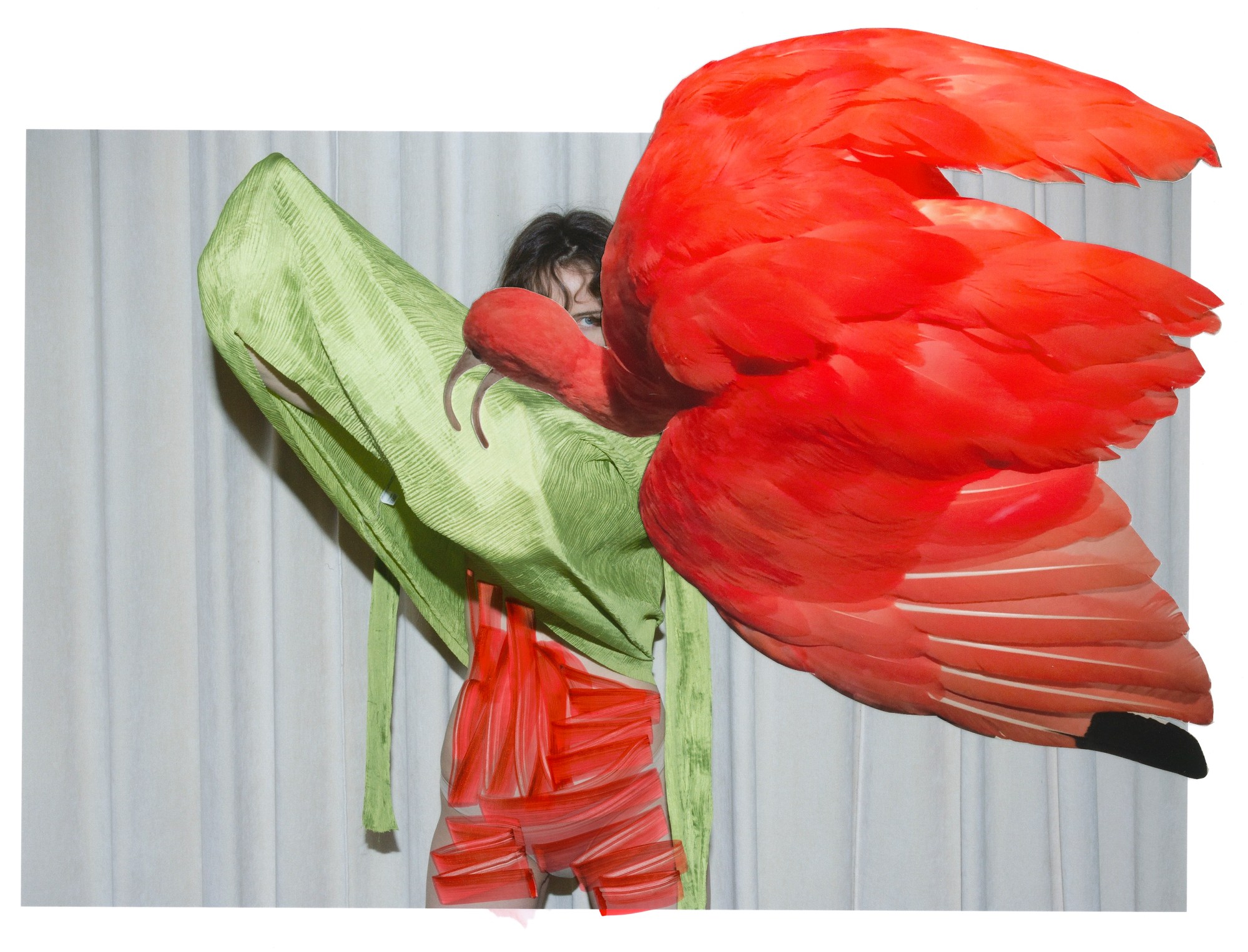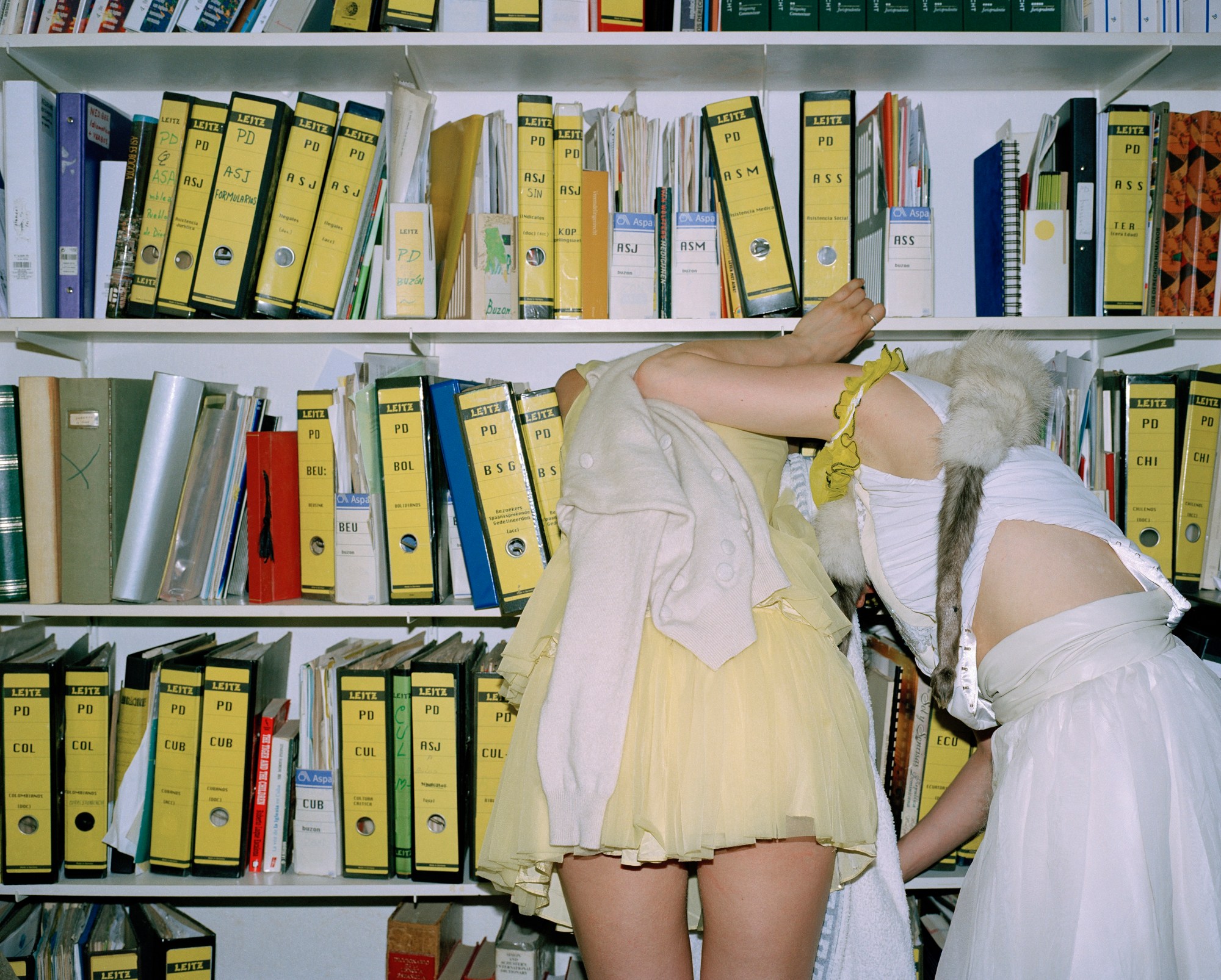Reasons for Viviane Sassen fans to get excited abound. The master Dutch artist will soon be commanding a solo show at Paris’ MEP — her first in France — that is accompanied by a sumo-sized, Prestel-published retrospective entitled Phosphor. Its title derives from the Greek “Phosphoros”, meaning bringer of light, and Viviane is just that. All corners of her canon beguile for their brilliant hues, and even her darkest compositions are full of pop and vibrancy, depth and intrigue.
500-plus pages deep, Phosphor draws from Viviane’s most celebrated series, such as Flamboya, in which she returned to Kenya, Umbra, her immersion into the world of shadows, Parasomnia, a dreamlike study of sleep, Roxane, a collaborative portrait created with her muse, and Venus & Mercury, her decadent portrait of the Palace of Versailles. Yet it’s upon flipping the book over — as if reading it back-to-front — that you find Viviane’s fantastical fashion work, with the worlds of art and commerce communing bang in the middle. It’s here that any boundaries between worlds cave in, revealing a symbiosis in which each feeds the other. In fact, it’s actually the frisson between reality and fantasy that charges Viviane’s surreal, uncanny and technically superlative pictures. What’s clear is that she is more like a sculptor with a camera — motivated, above all, by the pursuit of the pure form.
We catch up with Viviane to talk dreams, Jungian psychology and her love-hate relationship with the fashion world.

Hi Viviane. What drew you to the word “Phosphor”?
This word has actually been with me for a very long time. I was about 18 when I first discovered it. I love the sound, the rhythm, the symmetry, which is slightly off. I love the way it looks. I love how it refers to light, to photography.
I just read that the god Phosphorus was named after the morning star Venus.
I honestly didn’t know that, but it doesn’t surprise me at all. Venus is beauty, life. So is light. I’m looking it up now…
What have you found?
So, I just checked Wikipedia, and the funny thing is, it says that the Latin word corresponding to Greek “Phosphorus” is “Lucifer”. Lucifer is related to “Luce”, which means “Light” in Italian. I named my son Lucius, which derives from Luce, light. But I never knew it was actually related to Phosphorus as well! Wow!

I’ve also just read this: “The chemical element, white phosphorus, gives off a faint glow when exposed to oxygen. Due to its reactivity, it is never found as a free element in nature.” Pretty photographic, right?
I do love the symbolism. I think I could fantasise and philosophise on this for hours. But yes, there’s magic in the medium of photography. It enables you to catch something that’s there for a split second. It will never repeat itself, exist, in the same way. It has the power to transcend time, space, motion into an object — a picture. Or is it not an object but merely a surface? Anyway, there’s a spark, and it enlights itself. This reactivity is crucial in photography. Just like phosphorus.
What’s your star sign?
I’m a Cancer. My rising sign is Leo. So, I’m ruled by two opposites: the Sun and the Moon.
The essays in the book hone in on surrealism. Where did your affinity with surrealism come from?
I think it came from childhood. I believe “magical thinking”, which we all go through in our early childhood, somehow remained a fierce source of inspiration for me thereafter. It has allowed me to dream.

Do you remember your dreams?
I do! For years and years into adulthood, I perceived my dream life at night as equally important to my awoken state. I think some of the most profound memories I have come from dreams.
You were reading Carl Jung when making Umbra, right?
I was. Carl Jung defined the archetype of The Shadow as that part of our unconscious selves that we’re ashamed of and afraid of. We all carry our own Shadow, and that’s what makes us human. It can teach us a lot about ourselves and others. It’s linked to our subconsciousness, which is again linked to our dreams and psyche. I’d recommend people read about it. It’s rather exciting, don’t you think?
For sure. Do you live by any personal philosophies?
Not many. I try not to make life too complicated. I try to be flexible, like water. Life becomes easier if you accept things you can’t change. I try to be gentle to others and myself.

You told me that your father started sculpting after his brain surgery…
Indeed. I remember him once carving out a snake in a tree next to our house. He also made a beautiful bum out of an old wooden log. I think he was looking for shapes in nature to give them meaning. Sculpture has never really been part of my practice, though, only through my lens. It’s about looking at an object thoroughly, approaching it from different angles, and finding the best shape. Or the most uncanny shape. It’s about tricking the eye, the brain.
I know you used to model back in the 90s. Do you think being in front of the lens has helped you behind it?
Yes. I think it’s helped me in the ways I collaborate with my models, professional or not. A good picture is a mutual effort. It’s a dance – a give and take. I always try to make sure my models are comfortable, as I know how hard it can be… Standing in the cold wind, waiting, in high heels that are two sizes too small. Enduring pain, exhaustion. Modelling isn’t that glamorous, most of the time. And when I collaborate with non-professional models, I really try to make an effort to explain my ideas and involve them in decision-making.
What’s your relationship with the fashion world? Love-hate?
Yes. Love-hate, always! I try not to be too involved in the fashion world, as it can eat you up. I love the creativity and the sensitivity of the people who work in fashion. But I don’t like the politics, vanity, consumerism and pollution.

Where do you get your ideas for editorials from?
I’m not quite sure, actually. I prefer not to look at too much fashion photography as I don’t like to reference other shoots. I’d rather be inspired by art, literature, film and travel. There are often crossovers between my art and fashion photography, such as the paint and inks I use in my art, which slipped into my fashion work. It goes both ways. The collage techniques I used for some fashion editorials became more prominent in my art at some point. The two feed off each other. In my creative process, the experimental fashion editorials I’ve made for independent magazines really helped me carve out my personal style.
They’re like laboratories?
Yes. Very playful ones. It does help getting into a creative flow, when you can bounce ideas around with a small team of creatives: a stylist who brings outrageous garments and objects to the table, a fearless model who isn’t shy of trying out new things, a makeup artist who comes up with some wild idea… Once you get into a rhythm during a shoot, it’s magic. If you do that often enough, you gain experience and can transport the same way of thinking onto commercial jobs. Commercial jobs are different as there’s a whole list of conditions you have to keep in mind. It’s more strategic, like solving a puzzle… I also enjoy that. I want those clients to be happy at the end of the day. But in that process, it’s sometimes hard to keep the creative aspect as strong as you’d like.
Would you say your work has become more experimental over the years?
I think so. In the sense that I’m less and less bothered by what other people might think of my work. I really thrive when I’m experimenting, playing and using my intuition. I love to work. It makes me so happy to make things. I forget about time and space and death and all that. I simply am.
‘Phosphor’ by Viviane Sassen will run at Maison Européenne de la Photographie in Paris from 18 October 2023 – 11 February 2024. The accompanying book is published by Prestel.

Credits
All images courtesy Viviane Sassen
